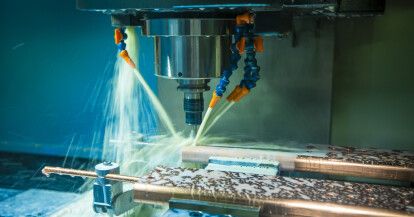Copper in the railway industry and railway electric traction systems

Copper has been used in the railway industry both for the construction of traction components and the railroad itself.
Since the development of the electric traction, electrolytic copper has been, and continues to be, the leading material in the manufacture of load-bearing and conductive components. In order to ensure the appropriate mechanical and electrical properties, various types of copper alloys are used for the purpose of construction of railway lines. Thus, let’s explain how copper is used in the railway industry.
Copper – a contemporary timeless material in the railway industry
Laboratory testing of the mechanical properties of copper and its alloys proves that their performance parameters are suitable for extremely demanding industries, like railways and railway electric traction. Manufacturers of copper components may obtain various properties by adding metals to its alloys – such as silver, magnesium, zinc, chromium, tin, zirconium or cadmium.
It should be noted that electric traction does not only refer to railways, but also to tram lines and underground networks. At present, the electric traction, underground and railway sector is rapidly growing. To be more specific, the fastest growing segment is the electric railway industry. This results from the increasing environmental awareness and knowledge of environmental effects of emissions.
However, the development of overhead line electrification would not be possible without copper components, especially low-alloy copper grades in the overhead contact lines. High strength is one of the most significant and standardised performance parameters for contact wires on high-speed railway lines and copper alloys meet these requirements.
In respect of the railway industry, copper is used to construct:
- contact wires,
- earthing systems – vertical and horizontal earthing,
- control cabinets for railways, trams and undergrounds,
- bus bars,
- bus ducts,
- signalling systems,
- pantographs,
- distribution boards,
- braking systems,
- motor windings,
- contact bars of commutators,
- service stations.

Low-alloy copper grades in overhead contact lines
Copper alloys for railway electric traction are selected according to the current carrying capacity of the line, the expected speed and traction solutions.
Copper and tin alloy
Alloys of copper and tin are used to make grooved contact wires for high-speed rails in Europe. The modern railway electric traction sector uses this material due to the electrical and mechanical properties of the low-alloy copper.
The alloy of copper and tin ensures higher tensile strength, reduced thermal softening and more cost-effective production. This alloy has a number of applications, i.e., in the wiring of automotive electrical systems. However, if tellurium is added to the copper and tin alloy, the resistance to thermal softening can be even increased. At the same time, the electrical conductivity is only slightly reduced (it is allowed by the high voltage of the railway traction supply).
Copper and magnesium alloy
This alloy is used, among others, for the construction of contact wires characterised by high strength properties. It is intended for high-traffic lines with significant network tension forces. The alloy has a high tensile strength and high permissible operating temperature. There are many potential applications of this alloy in the railway industry, for instance, load-bearing and conductive components for overhead contact lines. It is possible to combine copper alloys with different magnesium contents depending on the properties required.
Copper and chromium alloy
Even a slight addition of chromium to copper will increase the products’ strength and hardness. In addition, superior thermal and electrical conductivity is obtained.
Copper in railway lines – copper contact wires
From the point of view of the rail system designer, the mechanical properties of the contact wires in the railway lines and their operational efficiency will be of key importance. This is particularly significant for contact lines on high-speed overhead lines. Copper alloys must have the right properties to eliminate high amplitude and vibration at the high voltage.
Copper used for contact wires must therefore not only be robust but also temperature-resistant and be an excellent electrical conductor. It is worth mentioning that copper has also other properties thanks to additives, which:
- increase mechanical strength (for instance, tensile strength),
- prevent corrosion and abrasion,
- reduce electrical conductivity,
- increase the thermal stability of the metal.

Electris – the Polish manufacturer of copper components for the railway industry
We are a supplier of copper components for, among others, the railway industry. Electris has gained experience in making copper parts for companies that implement our solutions in the construction of advanced railway electric traction.



